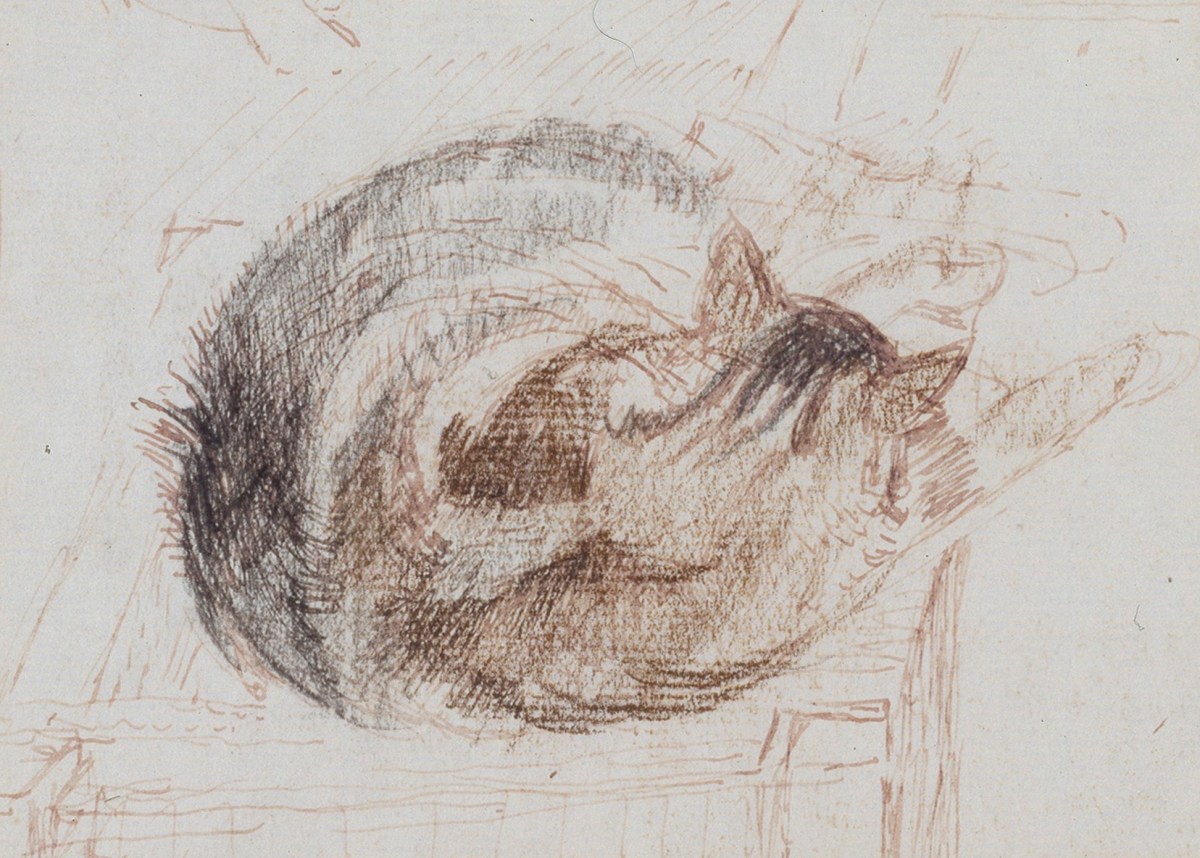
F. Ernest Jackson ARA, Study of a cat and other drawings.
Brown and black chalk over pen and ink on laid paper. 325 mm x 275 mm. © Photo: Royal Academy of Arts, London.
This image is not available to download. To licence this image for commercial purposes, contact our Picture Library at picturelibrary@royalacademy.org.uk

F. Ernest Jackson ARA, Study of a cat and other drawings.
Brown and black chalk over pen and ink on laid paper. 325 mm x 275 mm. © Photo: Royal Academy of Arts, London.
This image is not available to download. To licence this image for commercial purposes, contact our Picture Library at picturelibrary@royalacademy.org.uk
Study of a cat and other drawings
F. Ernest Jackson ARA (1872 - 1945)
RA Collection: Art
In the centre of this sheet is a drawing of a cat lying on a stool or table and stretching out its front legs. This drawing, in chalks over pen and ink, has had a border drawn around it in brown chalk and appears to have been kept in a mount which obscured the rest of the sheet. The ink in the area which was displayed has faded from green to grey. Below the border, the legs of the table or chair on which the cat sits are drawn in (the ink still green in this area). On the top left of the sheet, also in green ink, Jackson has added another drawing of a cat and what looks like a human figure. At the top of the sheet is a detail of a cat's head. Some of the inscriptions on the recto and verso possibly relate to the reproduction of this image.
J. G. P. Delaney discusses Jackson's fondness for drawing cats in his introduction to the catalogue F. Ernest Jackson and his School (2000):
'In the 1920s, when teaching drawing made him turn more to drawing for its own sake, he did a series of figure drawings for Colnaghi's. Cats, which he loved, provided him with a more informal source of models. He often uses the cat's markings to model the form and captures the animal's soft, furry quality with a delicate chalk or pencil. Since his cat drawings have hung in the Friends' Room in the Royal Academy and three from the Academy's collection have been made into best-selling post-cards, these engaging, private studies have now become Jackson's best known works.'
According to the same catalogue many of the drawings depict Jackson's cat, Timothy, although as this drawing was in the collection of Jackson's friend, the artist Dorothy Hutton, it is possible that it depicts her cat, Moses.
Delaney also points out that although Jackson was never a very famous artist he was well known in the art world, particularly as a teacher. His drawings were singled out for particular praise by such artists as Augustus John, who described Jackson as 'a very fine draughtsman - indeed one of the best not only of his period, but of the whole of British art'. Similarly, Sir Gerald Kelly noted that after twenty years of teaching at the Royal Academy Schools, many of Jackson's pupils considered their teacher to be 'one of the greatest draughtsmen England ever had, and how right they were'.
Object details
325 mm x 275 mm



